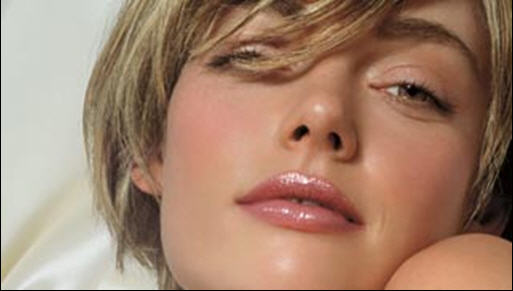Lipstick will Provide the Insight
To write killer stories, the first thing you must learn is what killer stories do. This is the first “mystery.” It is the grand unifying theory that unlocks everything that follows.
The key to this mystery can be discovered in lipstick.
I’m not trying to be cute. Without this key, you will wander. Without it, you’re guaranteed to struggle, to never know what makes some stories soar and others belch and squish.
What is lipstick?
Some might answer that lipstick is waxes, oils, emollients, alcohol, and pigments. Fragrance maybe. Maybe other things as well. Other ingredients.
Think harder.
There are lots of things made from waxes, fats, emollients, and pigments–clown makeup, camo paint, Vaseline, Hostess Ding Dong’s (have you eaten one lately?).
What is lipstick?
Stuff you put on your face.
I put sunscreen on my face. I put Nutrogena lotion on my face. I put lip balm on my face.
Maybe this will help. Look at the two pictures below. Which one represents lipstick best?
Picture A
Picture B
Which one is lipstick?
Don’t scroll down yet.
Think.
Picture A is missing something critical and cannot, therefore, ever describe lipstick accurately. But what’s it missing? Can you see it?
Scroll up. Look at the two pictures again and feel the difference.
Did you feel it? Even just a little?
What happens to you when you look at the woman and her lips that doesn’t happen when you look at the tube of lipstick?
For me, I see tube of lipstick and nothing more occurs. It’s just a tube of lipstick. But when I look at the woman and her lips, I feel something. That’s what effective lipstick does–it makes me feel something. Yes, it protects your lips, but that’s a secondary purpose and sunscreen does that just as well or better. Lipstick’s purpose is to create that emotion of desire that we get when we see a beautiful person. For women, it might be also to generate the longing to be that person of beauty, to be desireable.
Lipstick is NOT its ingredients. You cannot talk just about waxes, fats, and pigments because you could very well be talking about Ding Dongs. If you’re going to talk about ingredients, you have to do so in the context of what you’re trying to do. You can’t create lipstick, except by accident, without knowing what it’s supposed to do. You can’t judge lipstick without knowing what it’s supposed to do. You can’t fix lipstick that’s not working unless you know what it’s supposed to do. You can’t because form follows function.
Folks, lipstick is what it does. And what lipstick does is create emotion.
So What Is Story?
You know the answer to this.
A story is…what it does.
And what do stories do?
Stop. Jot down three to five of your favorite stories. They might be fiction, history, biography, gossip, jokes. They might be novels, poems, movies, cartoons. Here are five of the hundreds I love:
- The Sound of Music (film)
- The Emperor’s New Groove (film)
- Bloody Jack (novel)
- Lord of the Rings (novels)
- The Green Mile (novel)
What did you love about your stories?
Mine made me laugh, yearn, and weep. They made me exclaim in wonder, curiosity, and fascination. They surprised me and filled me with desire. They got my heart beating with suspense and sympathy. They gave me insight.
Is your list similar?
What stories do, successful stories, great stories, stories people actually pay money for, is generate reader emotion.
This is the first mystery. This is the grand key. You must never lose sight of it. Some readers pay hundreds of dollars a year, sometimes thousands, and spend a tithe of their life to feel what stories make them feel.
Stories are what they do. And what they do is generate emotion. This is the first thing you must learn. Of course, “emotion” is too general. You must get more specific.

















I don’t know that the lipstick on the model is pronounced enough. While reading, I had two images in my mind that punch “lipstick” for me. One was of a child who has inexpertly applied bright red lipstick and the other was of a cross-dressing biker. In both cases, cognitive complexity takes the image beyond what an already beautiful woman thinks of lipstick; “lipstick” becomes the medium.
One thing I find interesting about your lipstick comment, is that each of the images you described about lipstick still engendered an emotion. The first image of the little kid made me smile. The second image, of the biker, made me actually start back in my seat. Both still brought powerful emotions, and the whole point of the lipstick lesson is to realize what it DOES: engender an emotion.